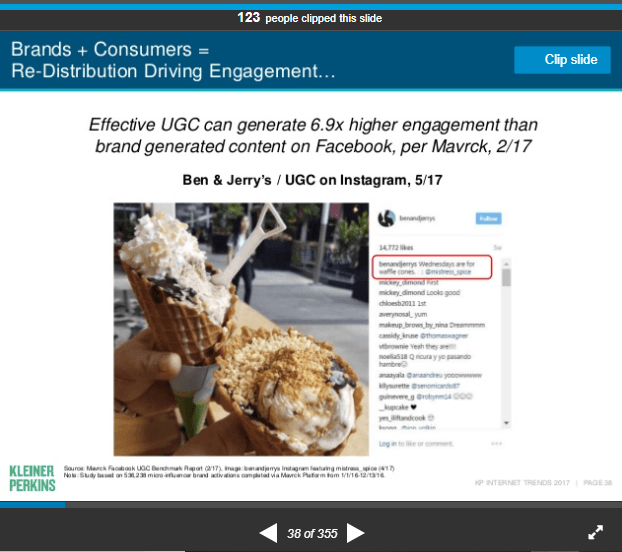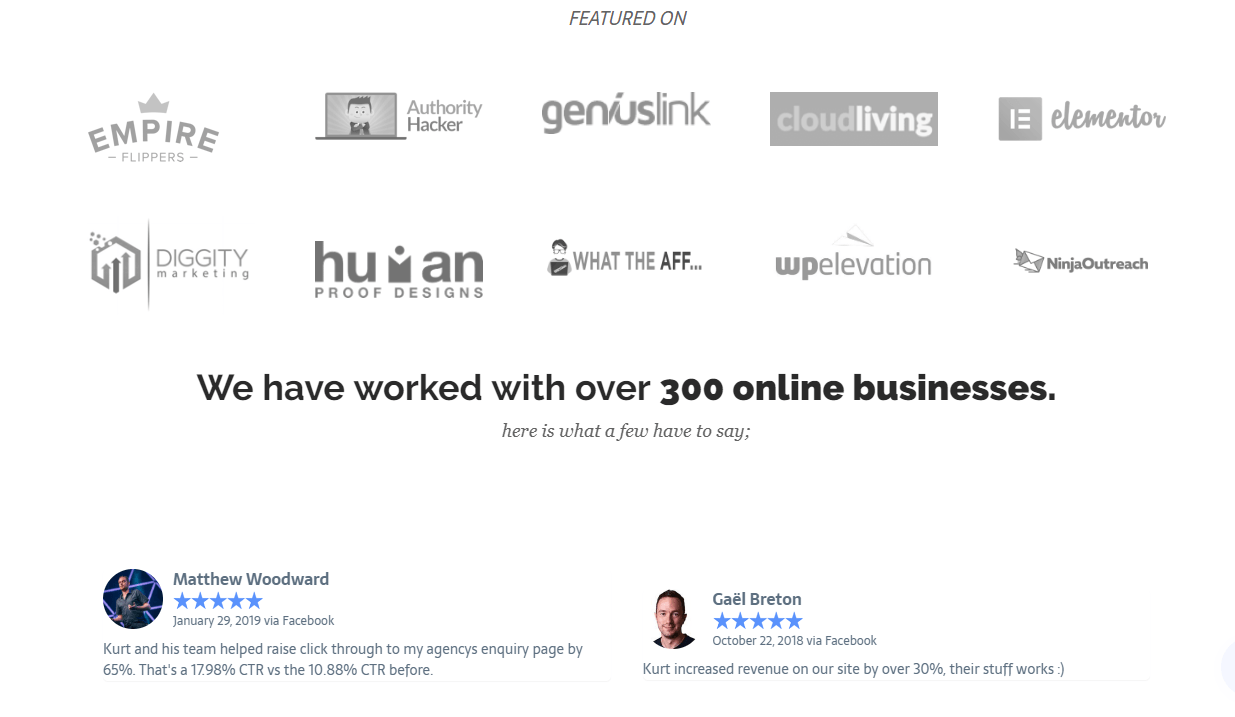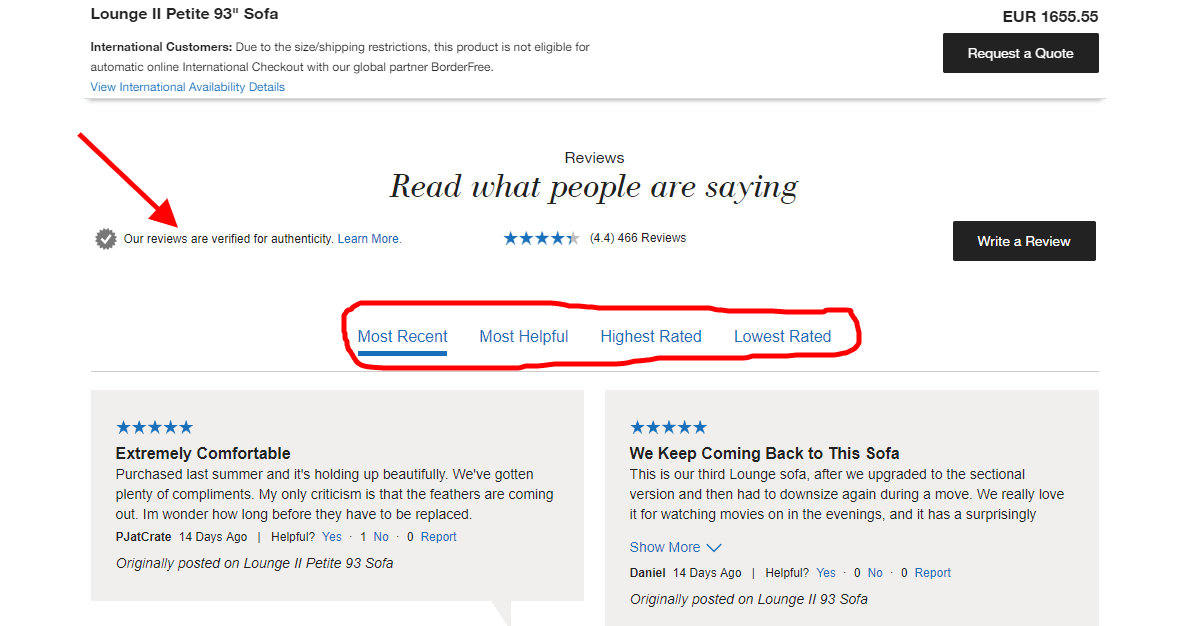
This is How You Use Social Proof to Make More Sales
Let’s see how good your visual perception is.
Look at the two images below.
Which of the lines in image 2 is the same length as the line in image 1?

Easy, right?
Now imagine there are 9 other people with you in the room.
I ask them the same question. All 9 first give their answers before you.
They all answer B.
When it’s time for you to give the answer, what do you say?
Do you say C which you know is correct? Or would you answer B as the rest of the group have done?
This is actually an experiment by Solomon Asch to study group conformity.
In his study, a majority of the participants in the experiment changed the answer they knew was correct and publicly gave the wrong answer.
This experiment shows the power of social proof on our behavior.
And it happens to be a very important concept in online marketing.

What is social proof and why is it important in digital marketing for attracting more Potential customers
Robert Cialdini in his seminal book, Influence – the Psychology of Persuasion, first coined the term social proof. It’s when we look at other people to guide our behavior.
This is often true when making decisions. When we don’t have a lot of information about a situation, we tend to listen to what the group says, and match our decision based on what they say.
This could not be more relevant than in digital marketing.
Think about it this way.
When we buy things online, there’s a significant degree of uncertainty. It’s not like going into a store where we can touch, feel and even test a product.
Sure. A good website and landing pages will have all the benefits and features laid out for you.
But we don’t really trust marketers, do we?
It’s one thing for a company to say they’re selling the best product. It’s another to have many people who bought it say that it is.
That’s social proof. And it’s something we seek out online.
Look:
68% of consumers don’t trust brands.
You’ll have to jump through a lot of hoops before they trust the words that come out of your mouth.
But get a third party to vouch for you and you slip into their circle of trust without a hassle.
In fact, 82% of internet users read reviews before they make an online purchase. And 50% of Americans believe that reviews help them feel confident in their purchases. (source)
As you can see, social proof is part and parcel of any company that wants to survive online.

So what types of social proof do you need?
There are 6 main types of social proof that you can use in digital marketing.
Let the experts do the talking
Experts carry a lot of weight when vouching for your credibility.
We listen to Cesar Millan for anything dog-related, to Matt Diggity for SEO, and to Brian Cox for Quantum Physics. Because they’re experts in their respective fields, we think there’s a very good chance that they know more about it than we do. So we take their opinions seriously.
It’s the same with selling online. When an expert in a related field vouches for your product or your company, a buyer thinks, “If Mr. expert believes/likes this company, then it must be good.”
See how Kano computer kits use this on their product page. I love how they get a prominent name in the Tech field (Director of OpenNews) to write a review based on what his 9-year-old thinks (it is, after all, a kit for kids).

Get celebrity endorsements
Celebrities used to mean only famous people like actors or athletes. But this now extends to influencers and micro-influencers online.
Whenever you use celebrities to endorse a product, pick the celebrity wisely. This isn’t just about choosing a famous person or an influencer with a lot of followers.
Pick someone who the people in your industry know about and respect. She should also really like your brand and use your product. Positive social proof strategies can be quite
Why?
This plays a major part in the success of your campaign and influencer marketing. As Silvera and Austad finds in this study, advertising is most effective when consumers believe that the endorser truly likes the product.
Also, you wouldn’t want to end up in a thread like this one where celebrities were caught using an Apple device despite being sponsored by a competitor. This is how bad sentiments and distrust in celebrity endorsements begin. And just see all the unhappy people in the comments section! Influencer marketing

Make it count using people just like them
Deep in the unconscious recesses of our brain is our natural attraction to people, places or things that resemble ourselves.
In fact, we make many of our major and minor life decisions based on what Psychologists call implicit egotism. For example, many studies have shown that people are likely to live in places that are akin to their name. So there are a disproportionately large number of Louis who live in St. Louis. And people with Cal in their name are likely to live in guess where?
But what has this got to do with digital marketing?
Here’s the thing:
It’s true that we value our thoughts and opinions. But we equally value the opinion of family, friends, and groups of people we associate ourselves with.
You see, making the decision to buy something can be stressful and exhausting to the brain.
So we often take the shortcut. How? By turning to people we trust. The people we know who are just like us and have the same motivations as we do. We easily take their opinions as valid and reliable.
And the stats confirm this, too. Here’s what a Nielsen study showed on the type of advertising people trust. Friend recommendations (people I know) is first on the list.

Show off certifications, awards and trust badges
A certification or award from an established and trustworthy organization can tip credibility in your favor.
This is also the easiest one you can use when you don’t have any reviews or testimonials yet.
For example, you can use a credible organization to prove the quality of your products. If you’re c“FDA-approved”, “ASTM-certified” or “IFOAM accredited organic produce”, then show that on your product pages.
You can also use certifications like Microsoft certified professional or Google Analytics certification.
For trust badges, use McAfee secure, Paypal certified or BBB accredited business.
Make use of any certifications you have that resonate with your audience.

What the Users Say
Many consumers seek out user-generated content.
It’s a way for people to gauge how the product works in the wild.
With social media, social proof is much easier to do. This is why unboxing videos are very popular. It’s a way for a potential buyer to see and experience the product before buying something.
As I’ve said earlier, when you buy online, you can’t feel and touch a product like you can when you go to a store. The closest thing you have are the reviews of others who’ve already got it.
With this in mind, make user-generated content part of your marketing strategy. It’s a powerful tool that generates 6.9 times more website engagement than brand-generated content.

You can’t go wrong with the power of the crowd
Remember that Asch experiment above?
The people who gave the wrong answer were asked afterward why they did it. Many of them said they knew it was wrong but they didn’t want to be the one to stand out from the crowd.
This may seem foolish in hindsight but the itch to follow the crowd is embedded in our psyche. It’s part of our survival instinct. A psychological phenomenon. The one who separates from the herd could easily become a Dire Wolf’s dinner. So we tend to go with a group’s opinion and put value in its collective wisdom.
Online customers like to see what the “crowd” says about a product in different social media platform. We make decisions based on what they say. If most of them say it’s worth buying, we tend to agree with them too.
And you know why this is? Blame your brain.
A study from the FC Donders Centre for Cognitive Neuroimaging in the Netherlands carried out brain scans on volunteers who were asked to judge the attractiveness of a series of faces.
As they chose which one was attractive they were also being actively swayed by group opinion. As this went on, the brain scan showed that every time the person’s opinion is different from the group, it triggered a neuronal response similar to a prediction error signal that influence customer behavior.
Yeap, that’s right. Every time your opinion is different from the group, your brain tells you you’ve just made the wrong decision.

Where and how to get social proof

So now you know the different types of social proof that influence buying decisions.
But how do you get them? Here are 5 things you can start doing now.
Spy on what your customers say about you on social media platforms
It’s easier than ever to get hold of what customers say about you on social media. Keep on top of things and you might just read good online reviews to use in your marketing campaigns.
Use Google Alerts to track any social media mentions of your brand, site or product.
Do this regularly. And you might even get lucky and have a celebrity tweet about you just like when Elon Musk tweeted this.
Always ask for a review or testimonial from users or clients
Asking for reviews should be an integral part of your business. Gain a competitive edge and cultivate social proof by regularly requesting customer feedback — social media account reviews are vital to business success.
Stay up-to-date on your audience’s temperature to ensure that their feedback is reflected in your marketing efforts. Regularly review and analyze the sentiments of those who matter most — potential customers!
How do you ask for reviews?
Many of your buyers, especially when they’re happy about the purchase, are not that motivated to leave a good review. So you need to be proactive. And like a lot of things online, making it as easy as possible for users to leave a review is key. Here’s what you can do.
-
Send a request for a review about a week after purchase. Accdg. To Yotpo, these types of emails are the number 1 way to get user generated content.
-
If a customer sends you an email or says something nice about one of your products or your brand, ask permission to use the comment in your influencer marketing materials. Proof of satisfied customers or customer testimonials can also be an effective way to go.
-
If you’re new and you don’t have any testimonials yet, here’s something you can do. Give your services or products for free in exchange for a real review. The key word is REAL. Don’t force them into giving you a positive review. If they don’t have a good experience, find out what they were not happy about. Then improve your processes if the complaint is legitimate and move on to another person.
Get on the radar of experts and influencers
Find influencers to work with. Use sites like Klout, Buzzsumo or Tweetdeck to find the influencers in your niche. Leverage the power of informational social influence to boost success in your industry.
Another thing you can do is to get on the radar of experts. If you have a good product or service, sooner or later, they will notice you.
There’s one important thing to consider here. Experts and social media influencers are very busy. You need to be mindful of their time.
So how do you get their attention?
Here are some ideas
-
Enroll in their course and send them a review. You can also write a case study on how the course helped your business.
-
Offer them something of value. One great example is you can find a popular post on their site. Then repurpose that article. You can make it into a PDF checklist, a slideshow, a video — whatever you’re good at. Then give it to them for free.
-
Is there a Youtuber or Instagram influencer you’ve got your eyes on? Send them a free sample of your product and ask if they can make a social media post or video on it. Some will eagerly do this. To increase your chances, target micro-influencers. They may have fewer followers but they usually have better engagement.
Make use of reviews from third-party sites
Third-party sites like Yelp, Facebook reviews, and Tripadvisor may be a bit intimidating.
But many consumers go there first before they buy from you, so it’s best to always monitor and respond to these sites. Think of them as an important part of your business. Positive reviews are great but when you get a negative one, make it a point to answer with decency and finesse.
Get real-time social proof
You don’t always have to depend on reviews for positive social proof. Sometimes, just showing that people are interested in your product is enough proof that you’re legit. Within your site, you can add information like;
-
How many people are reading the page
-
How many have subscribed
-
How many have bought your products
For example, when searching accommodations at Bookings.org, the page shows how many people are currently looking at the accommodation. This creates a sense of urgency and scarcity, and also the social proof that other people are interested in the hotel.
Another way you can do this is by using small pop-up notifications that show recent interactions on your site.
These could include how many people have recently subscribed to your newsletter, who bought what in the last 2 hours, or who just signed up for a free trial.
A highly-rated tool for this is FOMO social proof.
Here’s what it looks like in action.

The best ways to show social proof
So now you have lots of social proof. But how do you use it?
First of all, don’t hide them. Don’t limit testimonials on websites to the sales page.
You can use it on your homepage. Like we do in Convertica.

On your emails to encourage more engagement.
Near a call to action button to reduce anxiety or add more value.
On an exit, pop-up to encourage sign-ups.
In short, put reviews in every part of the customer journey.
Here are some things to consider when designing your site with social proof in mind.
-
Reviews with an image convert more than those without. This tells prospective customers that the review isn’t fake.
-
Design/add social proof for conversions. Put a review at the point where you want site visitors to take action, like near your call to action button.
-
Don’t be scared of negative reviews. Studies show that perfect 5-star reviews across the board do not increase sales. This study concludes that the probability of purchase increases with a rating of about 4.2-4.5 stars, but then decreases after that.
-
Don’t fake social proof. Always give examples of social proof.
-
A verified buyer converts more than one who isn’t. Amazon does this well. Check out how Crate & Barrel does it on their site.

Conclusion
There’s no denying that social proof such as customer reviews and other third-party recommendations are good for your online business or e-commerce businesses.
Their words can convince your potential customers more than your marketing materials ever could.
So make it a priority in your digital marketing strategy. Make use of project management software that will help allow your strategy to be organized and effective. But remember, you can only have convincing and positive reviews when you actually have an awesome product worth raving about.
So start with perfecting your product or service and then let all your happy customers do the selling for you.








 To get started, please enter your details below
To get started, please enter your details below
0 Comments